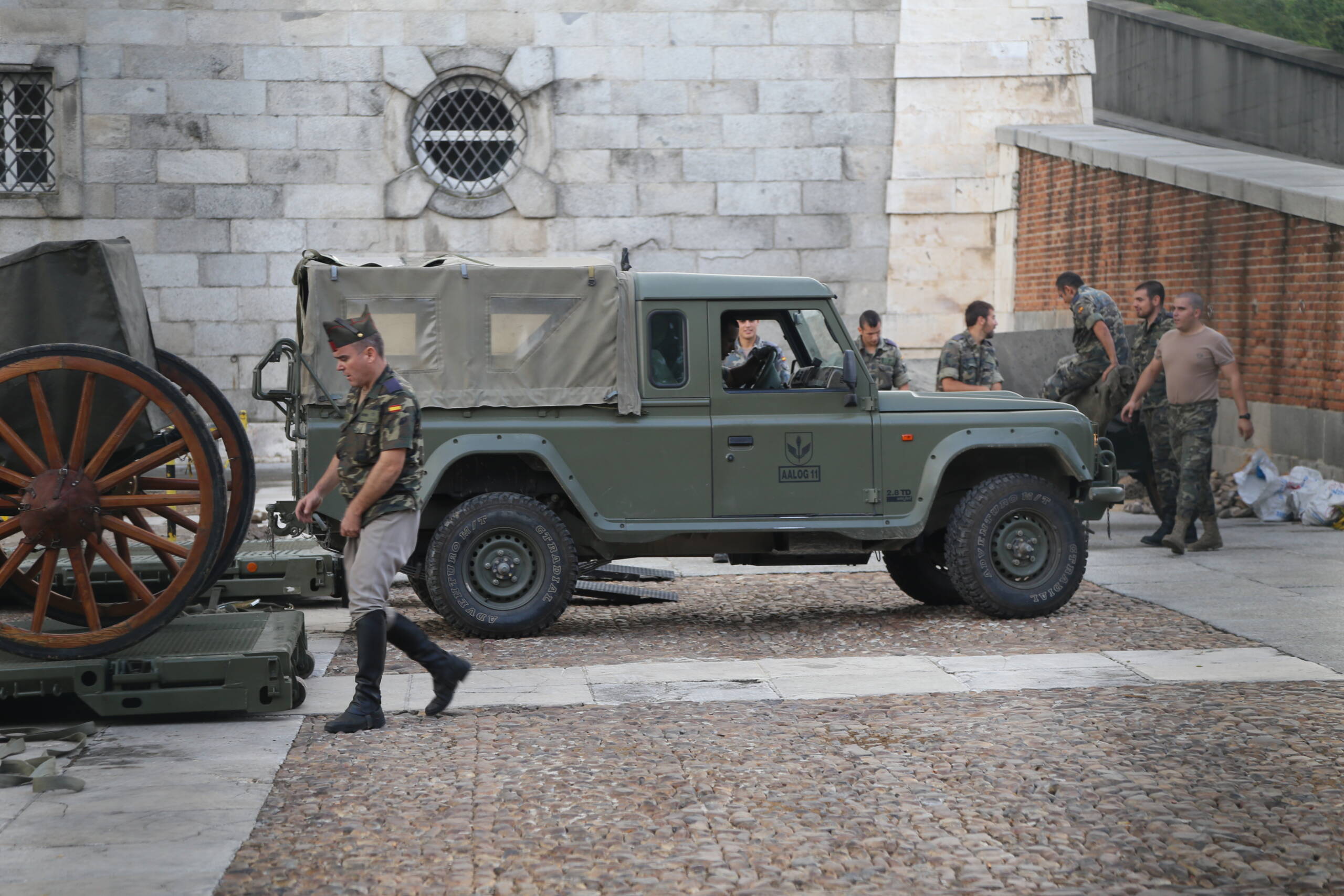The memory of Spain’s National Day for me doesn’t begin on the parade route, but in a quiet stone courtyard behind the Royal Palace. I stumbled upon it by chance the day before, where a small detachment of soldiers was preparing equipment. An olive-green military Land Rover Santana stood parked against the centuries-old walls, canvas top rolled tight, its insignia faintly visible. Beside it, a ceremonial artillery cart with massive wooden wheels looked like a relic pulled straight from another era. Soldiers in camouflage moved with easy rhythm—some hauling gear, some joking, one leaning casually against the jeep. A man in tall black riding boots paced past the cannon with an air of practiced calm, the kind of gait that comes from repetition, not performance. It felt less like history on display and more like history being quietly readied, tucked into place before the city’s grand spectacle.

By the next morning, Madrid had transformed. Flags unfurled from balconies, entire avenues swallowed in red and yellow, and Paseo de la Castellana filled with families staking their ground. Children sat on shoulders, clutching paper flags, while vendors threaded through the masses with roasted nuts and balloons. The hum of anticipation was interrupted by a sudden roar overhead—Eurofighters slicing the sky, their trails etching bold lines above the rooftops. I felt the vibration in my ribs before I even tilted my head to see them.
The street parade was a deliberate crescendo. Tanks crawled past with their heavy growl, sunlight glancing off armored steel. Cavalry followed, hooves clattering against asphalt, riders upright, horses gleaming in the autumn light. Every salute, every step was measured, a choreography of tradition and might. At the center of it all, the King received the homage of his forces, framed not just by soldiers and machinery, but by the weight of Spain’s long story—a past and present woven into one seamless march.
Yet Madrid is never a city content to linger in solemnity. As soon as the parade ended, the barriers came down, and life spilled back into its plazas with an entirely different energy. Plaza Mayor turned into a feast of sound and scent—tables crowded with jamón, croquetas, tortilla española, and glasses of vermouth clinking beneath the late sun. A street guitarist struck his chords beneath an archway, his music threading through the chatter and the drifting smell of roasted chestnuts. Groups moved arm in arm, laughing, their faces flushed from wine and the crisp air.
By nightfall, Gran Vía was alive again, glowing with theater lights and neon signs. The young carried folded flags under their arms like trophies, heading into bars where the celebrations continued. The pageantry of the morning felt far away, replaced by the warmth and joy of Madrid being itself—loud, celebratory, and tireless.
That’s the truth of Spain’s National Day. It is not just the parade, the flyovers, the tanks, or the uniforms. It is the way the city shifts between reverence and revelry, between order and joy. Madrid can summon the silence of a thousand salutes in the morning and dissolve it into laughter and music by evening. And for a traveler, to see both sides—to stumble first upon the backstage preparations, and then to be swept into the city’s embrace afterward—is to glimpse Madrid at its most authentic: a city that remembers its history, but lives most fully in the moment after the applause.
Leave a Reply